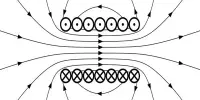Metamaterial cloaking uses artificial materials known as metamaterials to modify the behavior of light or other electromagnetic waves. These materials are engineered to have unique qualities not present in naturally occurring compounds, allowing them to bend light in novel ways.
Metamaterial cloaking refers to the use of metamaterials in an invisibility cloak. This is accomplished by altering the routes that light takes through a unique optical material. Metamaterials guide and control the propagation and transmission of specific sections of the light spectrum, demonstrating the ability to make an item appear invisible.
Cloaking with metamaterials often entails designing a structure that can direct incoming electromagnetic waves around an object, effectively rendering the thing invisible or undetectable to outside observers. This is accomplished by changing the metamaterial’s refractive index so that light is directed around the cloaked item, essentially producing an area where light appears to move unhindered.
Metamaterial cloaking, which is based on transformation optics, is the process of hiding something from view by manipulating electromagnetic radiation. Objects in the defined location remain present, but incident waves are steered around them without being influenced by the thing itself.
One of the most difficult aspects of metamaterial cloaking is developing materials that can efficiently modify light over a wide range of wavelengths, from visible light to radio waves. Furthermore, developing metamaterials that are practical to make and deploy remains a major challenge.
Despite these limitations, metamaterial cloaking has demonstrated promising results in a variety of applications, including military stealth technology, enhanced optical equipment, and even medical imaging. However, much more study and development are required before metamaterial cloaking may be widely used in practical applications.
















